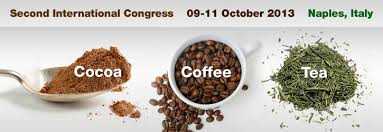Bicchi C.1, Ruosi M.R.1, Cordero C.1, Cagliero C.1, Rubiolo P.1, Liberto E.1, Sgorbini B.1 1 Department of Scienza e Tecnologia del Farmaco, University of Turin, Turin, Italy E-mail: carlo.bicchi@unito.it
Roasting process plays a fundamental role in the generation of the characteristic coffee aroma, strongly influencing its sensory properties and, as a consequence, consumers’ acceptance. The complexity of the composition of the coffee volatile fraction resulting from roasting is due to several chemical reactions from known precursors, mainly Maillard reaction, Strecker’s degradation of amines and thermal degradation of carbohydrates, which can originate hundreds of compounds and, as a consequence, a profile that can be assumed as a diagnostic parameter to monitor coffee quality, origin, sensory impact, safety, etc.
The approaches deriving from modern omics disciplines (metabolomics, foodomics, flavoromics etc..) that involve the use of all components together as a cumulative parameter to describe and/or characterize a matrix, can successfully be used to monitor different roasted coffee properties on the basis of diagnostic quali-quantitative distribution of known (or unknown) aroma components.
This study discusses the advantages of the application of profiling and fingerprinting methods to the analysis of the coffee volatile fraction and the possibility to obtain higher levels of information as a complement or an alternative to conventional methods. In particular it describes the use of modern analytical procedures based on the Total Analysis System approach involving the combination of high concentration capacity and solventless sampling techniques (S-HS and D-HS) combined with separative and non-separative analysis methods (GC, GC-MS, GCxGC-MS, S-HS-MS and HS- SPME-MS) and advanced statistical data processing (MVA; PCA, OPLS-DA) applied to the characterization of some properties (or characteristic) of roasted coffee.
References
[1] Bicchi, C. et al. Quantitative analysis of volatiles from solid matrices of vegetable origin by high concentration capacity headspace techniques: determination of furan in roasted coffee. Journal of Chromatography A, 2011, 1218, 6, 753-762
[2] Ruosi, M.R., A further tool to monitor coffee roasting process: aroma composition and chemical indices. J. Agric. Food Chem. 2012, 60 (45), 11283−11291,
[3] Liberto, E. et al. Non-separative Headspace Solid Phase Microextraction−Mass Spectrometry profile as a marker to monitor coffee roasting degree. J. Agric. Food Chem. 2013, 61(8), pp 1652–1660.

















 CAPS: the new proprietary system using capsules made of 85% recycled aluminium
CAPS: the new proprietary system using capsules made of 85% recycled aluminium